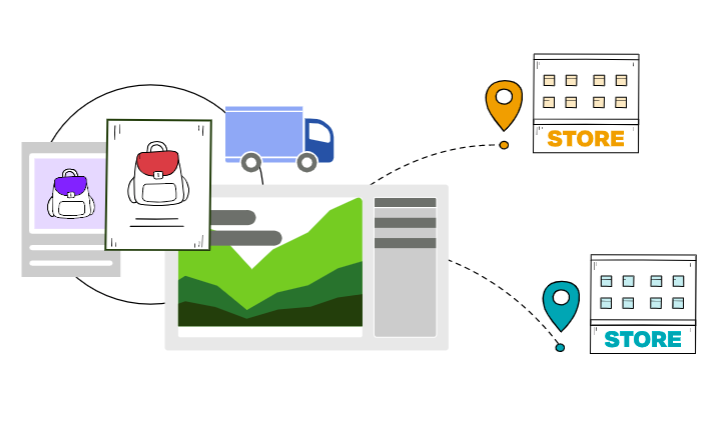3 common challenges with current store profiling methods


For a few years now, the retail landscape has been turbulent to say the least. New challenges almost every quarter have changed how consumers shop, engage with brands, and make purchase decisions. With supply chain disruptions and rising energy costs, retailers are needing to adapt their approaches to many areas across the business.
While distributing marketing campaigns to stores is a practice as old as time, even these processes need to change to satisfy customers and drive revenues in-store.

If you’ve opened more than a few stores, you have likely been faced with the task of how to track and record exactly what’s in each location. This is an important step in being able to effectively plan, target and distribute promotional materials to all your stores. And, help inform other operational decisions. Alas, this likely welcomed your organisation to the world of store profiling.
Store profile information is often collected through comprehensive audits. The data is saved in a variety of locations, from spreadsheets and emails, to supplier databases and employee brains! Because of this, it’s not uncommon for retailers to have a patchy view of their stores and their individual requirements.
Which leads us on to…

A key challenge with current store profiling methods is that most of the data is collected in a store audit, which while a very effective starting point, can rapidly become out of date. As soon as a store layout changes or there have been updates to fixtures and fittings, the audit information is no longer reliable.
What does that mean? Marketing materials are unnecessarily produced and distributed to stores that no longer need them. And, other stores lack the display content that they need, negatively impacting the look of the store and the customer experience.
The problem here is not the store audits but the absence of maintenance once the data is collected and stored. To be useful, store profiles need to be updated constantly, with a stream of accurate information from store or regional teams.
With widespread use of email, shared docs, and spreadsheets, it’s hard for retailers to easily access and utilize the information they have about their stores. Many head office teams have a limited view of their in-store spaces, technology, GNFR and marketing potential. As a result, physical marketing is frequently planned and distributed with a ‘one-size-fits-all’ approach. Every store gets the same materials, whether needed or not, and the redundant stock is disposed of.
In fact, research shows that retail displays contribute more than 2 billion pounds of cardboard waste each year. We can only imagine the amount of paper waste. And, 30% (as high as 50% in some research) of produced materials never actually get installed in stores. That’s a hefty chunk of the marketing budget being quite literally thrown away.
And it’s not just the cost of the materials being wasted, marketing campaigns can take weeks of employee time to plan and create. From initial concepts and designs to production, distribution, and installation, it requires considerable human resource. Some of which could quickly be redeployed with more streamlined processes.
Our independent research did find that 66% of the retailers surveyed are minimizing waste by sending different quantities of materials to each store. And, 52% reported sending different sizes of materials to each location – so change is on the horizon. But, 76% said creating just one round of marketing materials takes a lot or an extreme amount of time and effort!
Huge opportunities are being missed when it comes to targeting, localising and developing more competitive in-store campaigns. Large quantities of store data on spreadsheets make it very difficult to understand at a glance, particularly when it comes to bigger store estates. This means that alongside generic quantities being produced and delivered, localization of marketing content is also very limited. Without properly segmenting marketing materials and checking their accurate installation across the estate, it is nearly impossible to A/B test promotions, notice trends and optimize future campaigns.
All of these challenges impact store experiences, and sales can ultimately suffer.
A modern more flexible and adaptable approach to managing and updating data about your stores. Or as we like to call it, Store Profiling 2.0.
Instead of store profiles consisting of data collected solely in retail audits, Store Profiling 2.0 provides a constant loop of feedback from your physical stores (via store teams) to their digital profiles. This ensures the information you have about each of your stores is always accurate and up-to-date.
And, with Store Profiles shifted off spreadsheets and into an accessible, online platform, that feeds directly into campaign planning and each stores unique requirements, there is an instant reduction in unnecessary marketing material costs and waste. Not to mention the new opportunities in pinpoint targeting campaign assets across the estate. And, quickly and easily localizing the content for specific stores or regions. All of this is only possible with a new interlinked and “marketing-minded” approach.
Want to learn more? Our latest ebook: Store Profiling: The Complete Guide covers:
You can download the full ebook for free here.
Enjoy this article? Get monthly marketing insights delivered direct to your inbox by subscribing to our mailing list.
Want to learn more about Colateral’s Location Profiler, get in touch here.
 Thought Leadership
Thought Leadership
Shoppers are increasingly channel fluid, easily going from viewing an Instagram ad to testing products...
 Thought Leadership
Thought Leadership
Whether it's a big celebrity endorsement, a brand crossover, or simply licensing images to use...